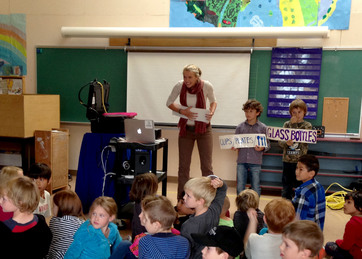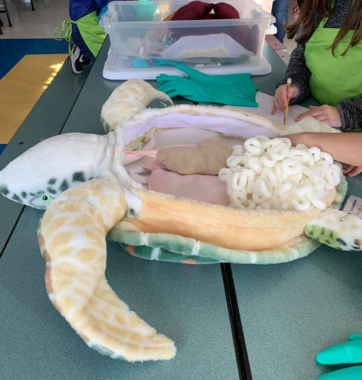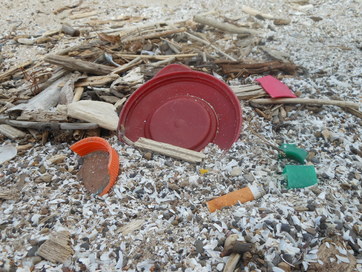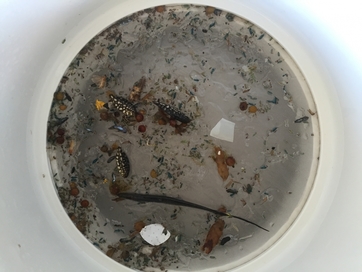Featured Lesson
 Students in this classroom learn to sort different types of debris (Photo Credit: NOAA)
Turning the Tide on Trash: Trash Traits
Grade Level: 1-6
Time: 40 minutes
In this interactive lesson, Students perform experiments to examine whether or not trash can float, blow around, or wash away. This helps students understand how marine debris gets into our ocean and Great Lakes and what they can do about it.
Check out all the lessons in the Turning the Tide on Trash curriculum.
Featured Project
 The simulated insides of this sea turtle plush help students understand the effects of marine debris on wildlife. (Photo Credit: Jan Rickey, Rachel Freeman School of Engineering)
UNCW MarineQuest Turtle Trash Collectors
One of the NOAA Marine Debris Project's newest projects is leveraging students’ fondness for sea turtles and encourage behavior changes that will reduce their generation of marine debris in the future. The University of North Carolina MarineQuest, with the support of a NOAA Marine Debris Prevention Grant, created the Turtle Trash Collectors (2TC) program. Through the program, students get to participate in a hands-on simulation of a sea turtle necropsy, or animal dissection, and earn badges to develop good habits.
Learn more about this project on our website.
Professional Development
 Marine debris isn't just in the ocean. This debris is on the shores of the Great Lakes. (Photo Credit: NOAA)
Marine Debris Webinar for Educators
Want to learn more about marine debris and plastic pollution in the Great Lakes? Curious about what educational resources are available? Join us for a one hour webinar. Experts will be sharing up-to-date information on the problem and presenting resources that can be used in the classroom or at other venues! All lessons are aligned with Next Generation Science Standards.
Open to all formal and informal educators.
Lessons geared towards 5-9th grade audience.
April 3, 2019 3:30-4:30 EST
Please RSVP to sarah.lowe@noaa.gov by April 2, 2019
Featured Blog Post
 This sample of plastics collected from the Gulf of Mexico also contains life. Animals all over the ocean and Great Lakes are consuming and excreting plastics. (Photo Credit: NOAA)
The Smelly Science of Tracking the Movements of Microplastics
Where does plastic go once it enters the ocean? This is a harder question to answer than it may seem. When we think of plastic pollution, most of us think of large pieces of plastic floating at the surface of the ocean, but that’s only a piece of the puzzle. Recent research is revealing that microplastics are being moved not just by currents and weather, but by animals through their digestive tracts.
Read the rest of the story here.
|